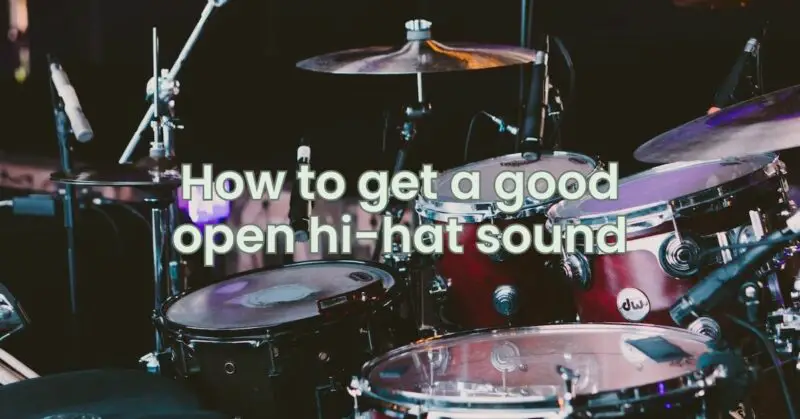The open hi-hat sound is a dynamic and versatile element that adds a burst of energy, groove, and rhythmic complexity to your music. Whether you’re producing electronic tracks, pop hits, or rock anthems, mastering the art of creating a captivating open hi-hat sound is essential for elevating your arrangements. In this article, we’ll delve into effective techniques to achieve an outstanding open hi-hat sound, allowing you to infuse your music with excitement, movement, and sonic brilliance.
Crafting the Perfect Open Hi-Hat Sound:
Creating a compelling open hi-hat sound involves a combination of technique, sound selection, and processing. Let’s explore the steps you can take to achieve a standout open hi-hat sound:
1. Choose the Right Hi-Hat Sample:
- Begin with a high-quality open hi-hat sample that resonates with your desired style and genre.
- Select samples with rich harmonics and a balanced tonal character.
2. Control Hi-Hat Pedal Pressure:
- Achieving a great open hi-hat sound starts with controlling the pressure applied to the hi-hat pedal.
- Apply gradual pressure to the pedal to produce a smooth and controlled opening of the cymbals.
3. Vary Pedal Position:
- Experiment with different pedal positions to explore a range of open hi-hat tones.
- Adjusting the pedal position can alter the amount of air escaping, resulting in varied sound textures.
4. Adjust Cymbal Separation:
- The distance between the hi-hat cymbals when open influences the sound.
- Experiment with cymbal separation to find the sweet spot that delivers the desired tone and sustain.
5. Combine with Other Elements:
- Layer the open hi-hat sound with other percussion elements, such as shakers or tambourines, to add depth and complexity.
6. Apply EQ:
- Use EQ to enhance the desired frequencies of the open hi-hat sound.
- Boosting the mid-range and high frequencies can accentuate the brightness and clarity of the open hi-hat.
7. Add Ambience:
- Applying a touch of reverb or room simulation can create a sense of space around the open hi-hat sound.
- Experiment with different reverberation settings to achieve the desired spatial depth.
8. Shape Dynamics with Compression:
- Apply gentle compression to the open hi-hat sound to control dynamics and sustain.
- Compression can add punch while maintaining a smooth and controlled sound.
9. Humanize with Velocity Variations:
- Introduce slight velocity variations in your MIDI patterns to mimic the nuances of a live performance.
- Velocity changes can lend a human touch to the open hi-hat sound.
10. Experiment with Automation:
- Use automation to modulate parameters such as pitch, pan, and filter cutoff during the open hi-hat’s decay.
- Automation adds movement and interest to the sound.
Conclusion: Unleashing Sonic Brilliance
The open hi-hat sound is a powerful tool for adding dynamics and excitement to your music. By following these techniques, you can craft open hi-hat sounds that stand out in your arrangements, contributing to the overall groove and rhythmic complexity. Whether you’re producing tracks that make heads bob or tunes that make feet move, remember that the open hi-hat sound is a canvas for your creativity. As you master the art of creating captivating open hi-hat sounds, you’re not just enhancing your music’s sonic palette—you’re infusing it with life, movement, and brilliance that resonate with listeners on a deep and rhythmic level.


